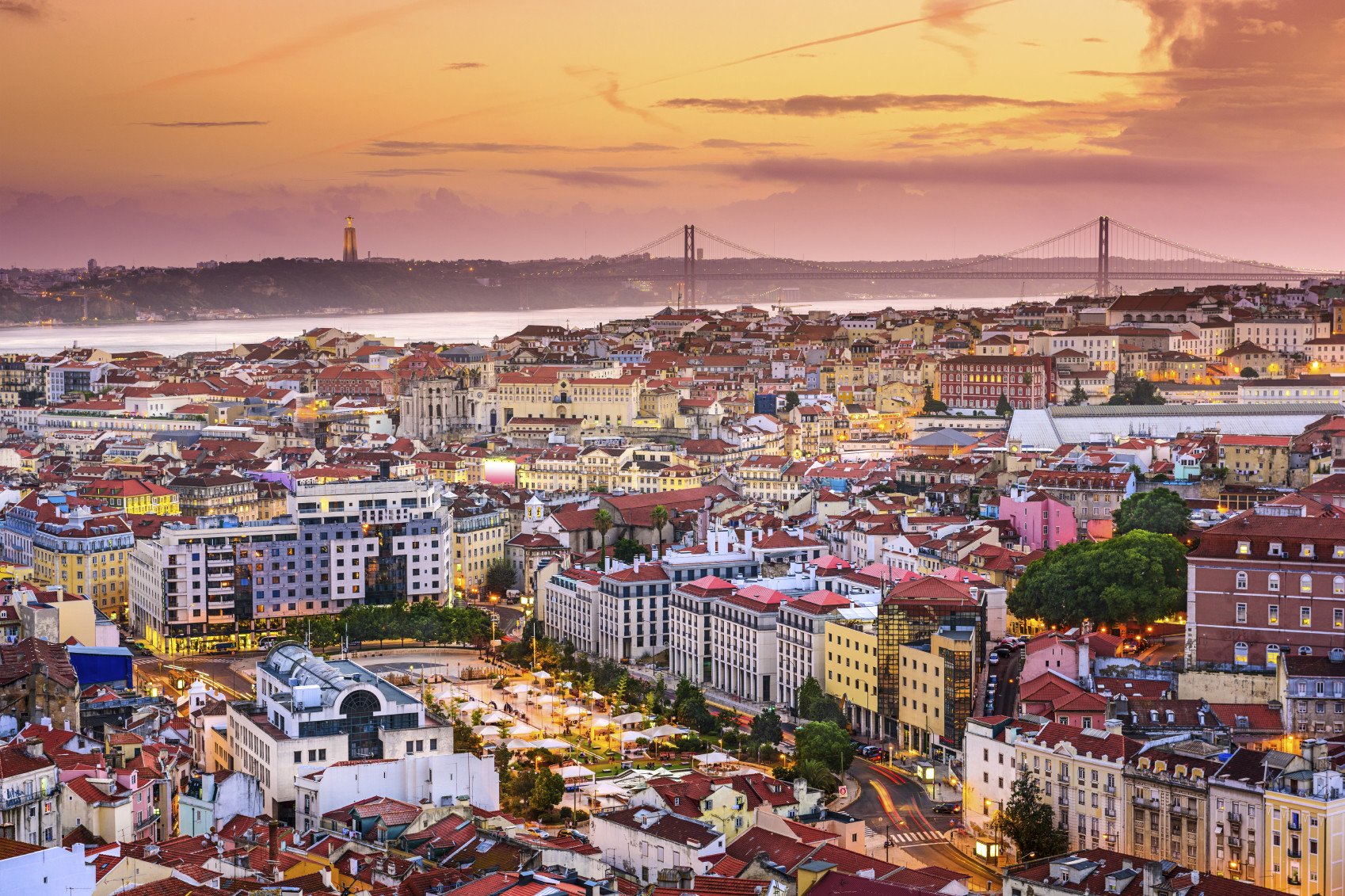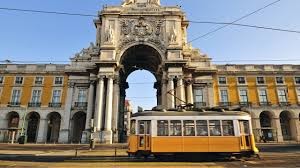City Guide Lisbon
This Portuguese capital is compact, affordable, offers a lot of cultural activities and the climate is nice throughout the whole year.

Lisbon is located next to the Tagus and has a lot of cultural sites and history to offer. After the earthquake in 1755, most of the city was rebuilt. Therefore, if you walk around the historic city centre, it seems as if time stood still for about a hundred years. A big plus is the relatively small historical centre of the city. You can go everywhere by foot but you have to be in fairly good shape since there's a lot of hills to climb. If you're not in such great shape, you can also use the antique trams that sometimes drive almost vertically on the streets.

Besides sightseeing during a city trip in Lisbon, you can also taste delicious food. In this way, you can enjoy the delicious Portuguese kitchen. Lisbon has a lot of qualitative restaurants which are also very affordable. In summer you can sit on one of many terraces until late in the evening. Finding accommodation is also not a problem: in Lisbon, you can find many hotels.
Don't think you're dealing with a crazy person if somebody's singing out loud on the street. This is 'Fado', a real Portuguese way to express your emotions and sorrow. They also perform this musical tradition in different bars.
A trip to Lisbon is a complete experience. It's a European city, but a little bit different than other European cities.
History
Legend has it that Lisbon was founded by the Greek hero Odyssee but actually the Phoenicians inhabited this area around 1200 B. C. Around 200 B. C., the harbor town was conquered by the Romans. When the Roman Empire crumbled, the city ended up in the hands of the Nordic people. Moors invaded the city around 711 after which it became an important business centre. Islam became the official religion.
Afonso Henriques conquered Lisbon and proclaimed himself the first king of Portugal. Christianity was restored as national religion. The existing Moorish castle was rebuilt on a hill as a royal palace. You can still visit this palace.
The 13th century was economically and culturally very prosperous for the city. The university of Lisbon was founded in 1290. De city became an important trading post. In 1497, the explorer Vasco Da Gama left for India. This was the beginning of the Portuguese Golden Era. Trade with the Far East resorted in a lot of wealth.
However, in 1755, Lisbon was hit by an earthquake that also caused a tsunami and many fires. The earthquake took the lives of thousands of people. De city was almost completely destroyed. De reconstruction was led by Prime Minister Marques de Pombal. You can still recognize his influence looking at the organized street map south of the Baixa district.
Disturbance and discontent of the Portuguese people concerning the Republican regime caused the National Revolution in May 1926. The army took the power. Leaders of the revolution dispensed the First Portuguese Republic and installed a National Dictatorship.
The Carnation Revolution took place in 1974 which ended the authoritarian regime of Marcello Caetano. The dictatorship and colonialism came to an end. In 1975, the first democratic elections were held. In 1986 Portugal joined the European Union.
The so called 'elevador" is an original transportation medium. Due to the beautiful historical construction it is part of the cultural sights. Elevador is the Portuguese word for an elevator and/or cable car. Using the cable car, you can go from lower Lisbon to upper Lisbon and the other way around. We advise you to buy a daily ticket for 4, 50 euros for daily limitless use, a separate ride costs 3, 50 euros.
A summary of the different elevadores: - Elevador de Santa Justa (1855) goes between Rua do Ouro (Baixa) and Igreja do Carmo (Chiado). - Elevador da Glória (1885) goes between Restauradores and Rua de S. Pedro de Alcântara (Bairro Alto). - Elevador da Bica (1888) goes between Rua do Loreto (Bairro Alto) and Rua de S. Paulo (Cais do Sodré). - Elevador da Lavra (1884) goes between Anunciada (Restauradores) and Travessa do Forno do Torel (Anjos).
Airport
The national airport is located close to Lisbon, 10 km from the city centre. Taking the Aerobus from the airport to the city is the easiest and cheapest way. The bus goes every 20 minutes. The Aerobus goes straight from the arrival hall to the Cais do Sodré station in the centre of Lisbon. It takes about forty minutes and costs 3, 50 euros. The bus schedule at the airport is from 7 am until 11 pm.
Photo gallery
Content available in other languages
- Nederlands: Stadsgids Lissabon
- Français: Guide sur la ville de Lisbonne
Want to have your own Erasmus blog?
If you are experiencing living abroad, you're an avid traveller or want to promote the city where you live... create your own blog and share your adventures!
I want to create my Erasmus blog! →

















Comments (0 comments)